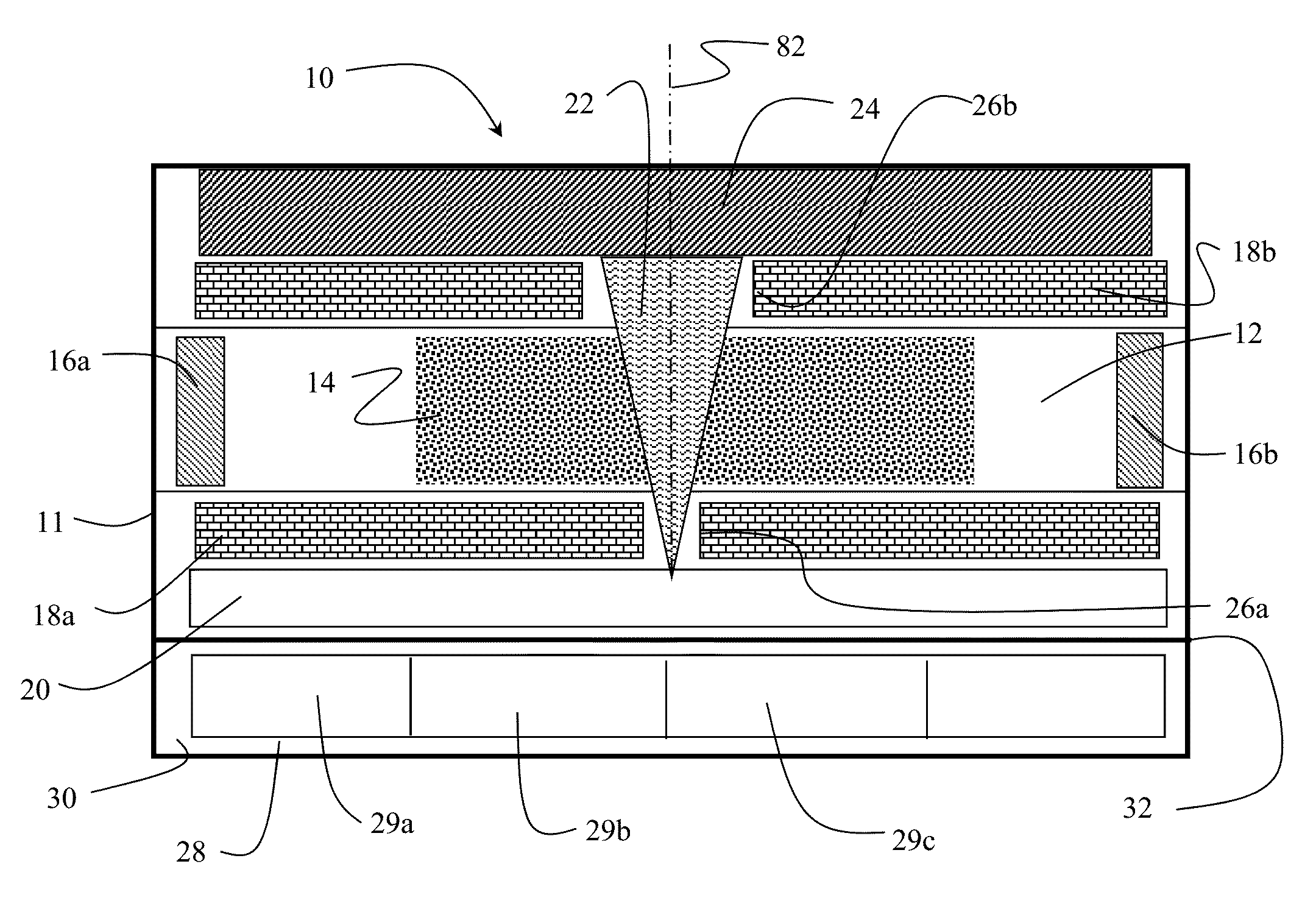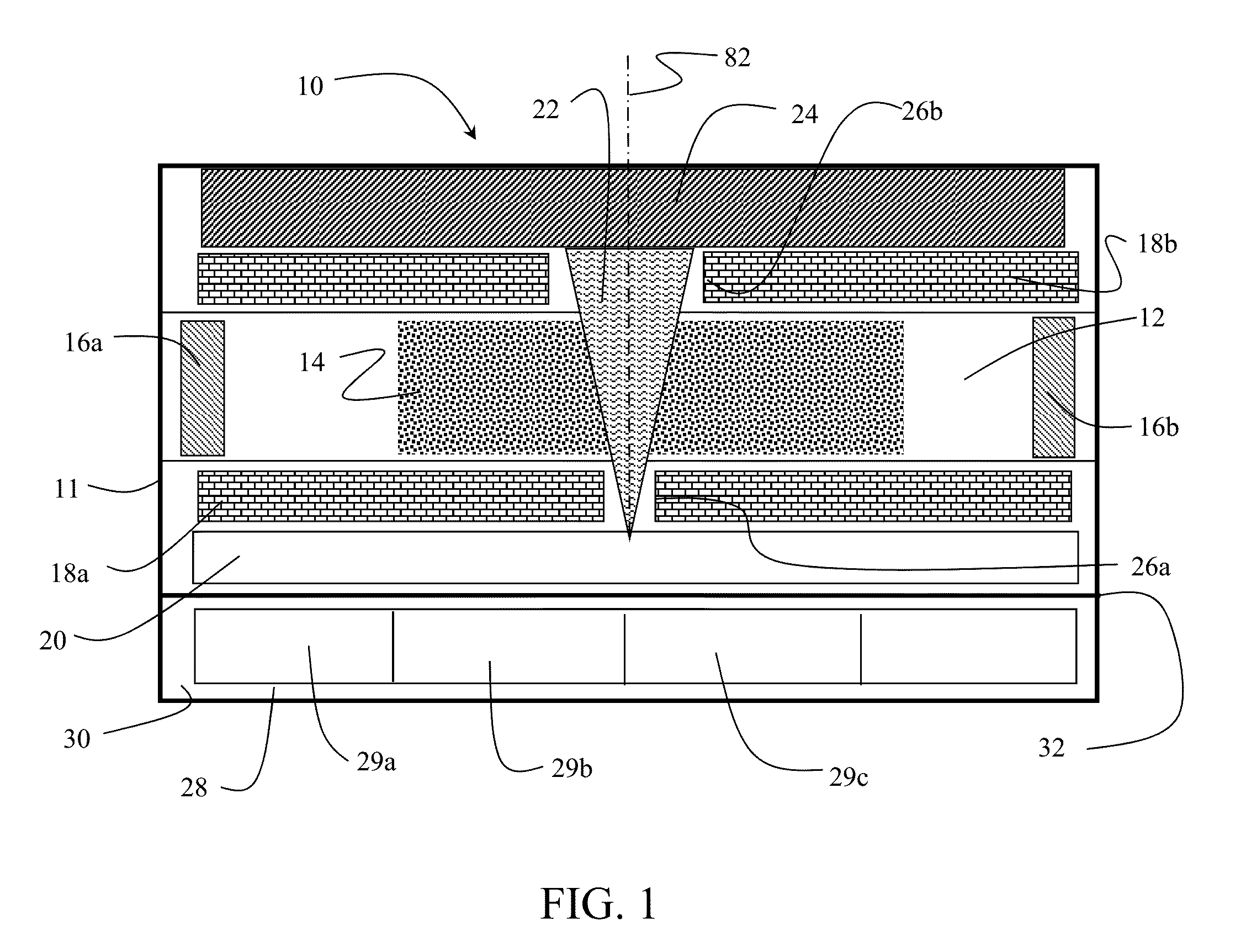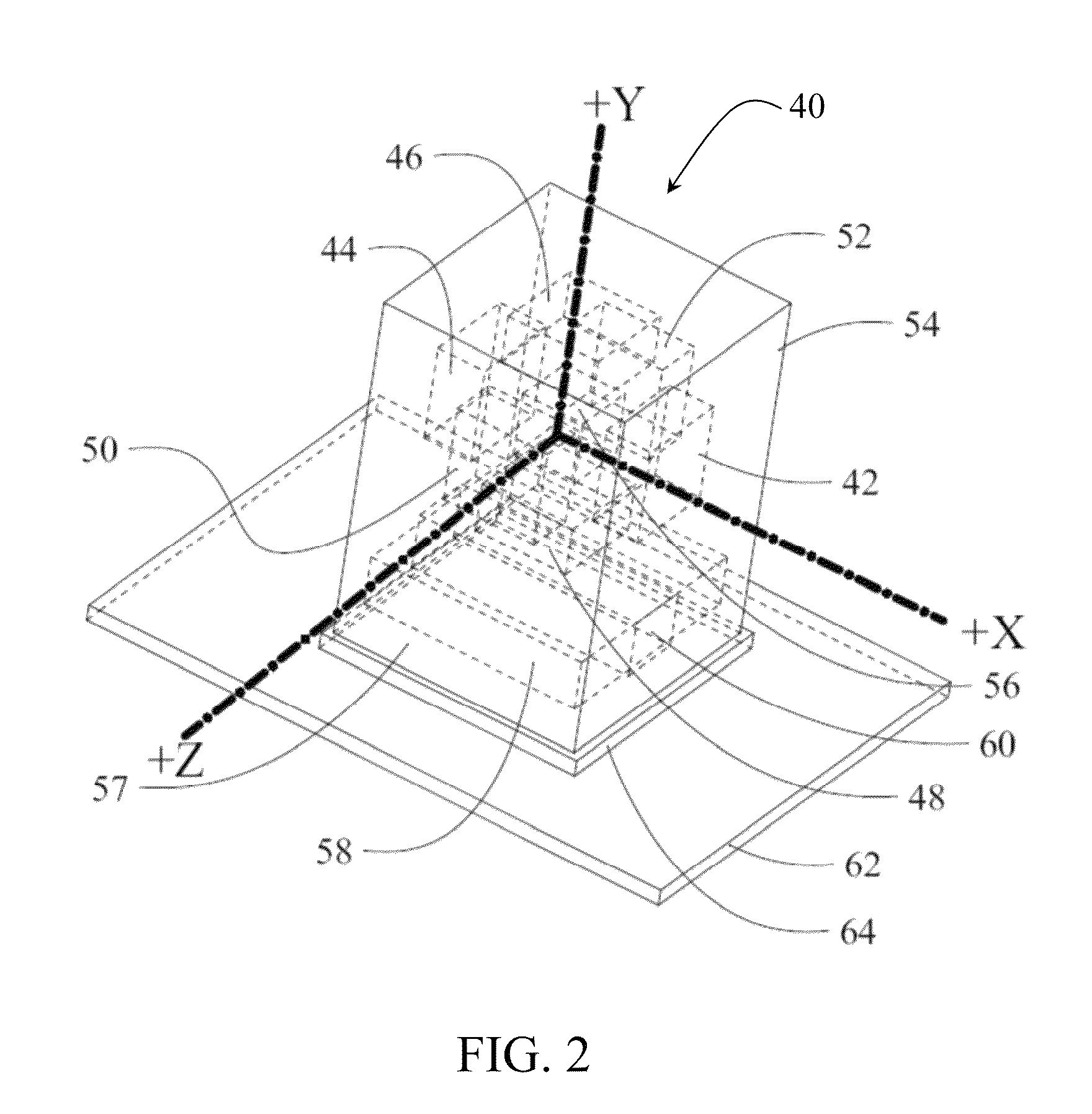Micro atomic and inertial measurement unit on a chip system
a technology of inertial measurement and micro-atomic, applied in the direction of the apparatus using atomic clocks, etc., can solve the problems of gps signals being denied, solid-state sensors and mems lacking the long-term stability and accuracy desired for accurate gn&
- Summary
- Abstract
- Description
- Claims
- Application Information
AI Technical Summary
Benefits of technology
Problems solved by technology
Method used
Image
Examples
Embodiment Construction
[0018]Embodiments disclosed herein provide a single micro system device functioning as a high accuracy inertial measurement unit (IMU). A Micro-IMU-Chip (MIC) co-integrates atomic sensors in the form of chip-sized atomic clocks (CSACs) (based upon the atomic physics of cesium atoms) and solid-state inertial sensors (based upon electrometrical laws of inertia and dynamics). Relative shifts in frequency measurements of the CSACs are related to acceleration imposed in each input / measurement axis. This frequency shift can be used to measure the acceleration. A set of three CSACs mounted orthogonally to one another can be used to measure acceleration, as well local gravity, in three axes. On each of the three axes, two CSACs in opposing input axis direction can be used as a refinement to measuring the acceleration vector in each axis. Additionally, the same set or a second set of CSACs in orthogonal configuration will experience a frequency phase shift relative to each other when there i...
PUM
 Login to View More
Login to View More Abstract
Description
Claims
Application Information
 Login to View More
Login to View More - R&D
- Intellectual Property
- Life Sciences
- Materials
- Tech Scout
- Unparalleled Data Quality
- Higher Quality Content
- 60% Fewer Hallucinations
Browse by: Latest US Patents, China's latest patents, Technical Efficacy Thesaurus, Application Domain, Technology Topic, Popular Technical Reports.
© 2025 PatSnap. All rights reserved.Legal|Privacy policy|Modern Slavery Act Transparency Statement|Sitemap|About US| Contact US: help@patsnap.com



